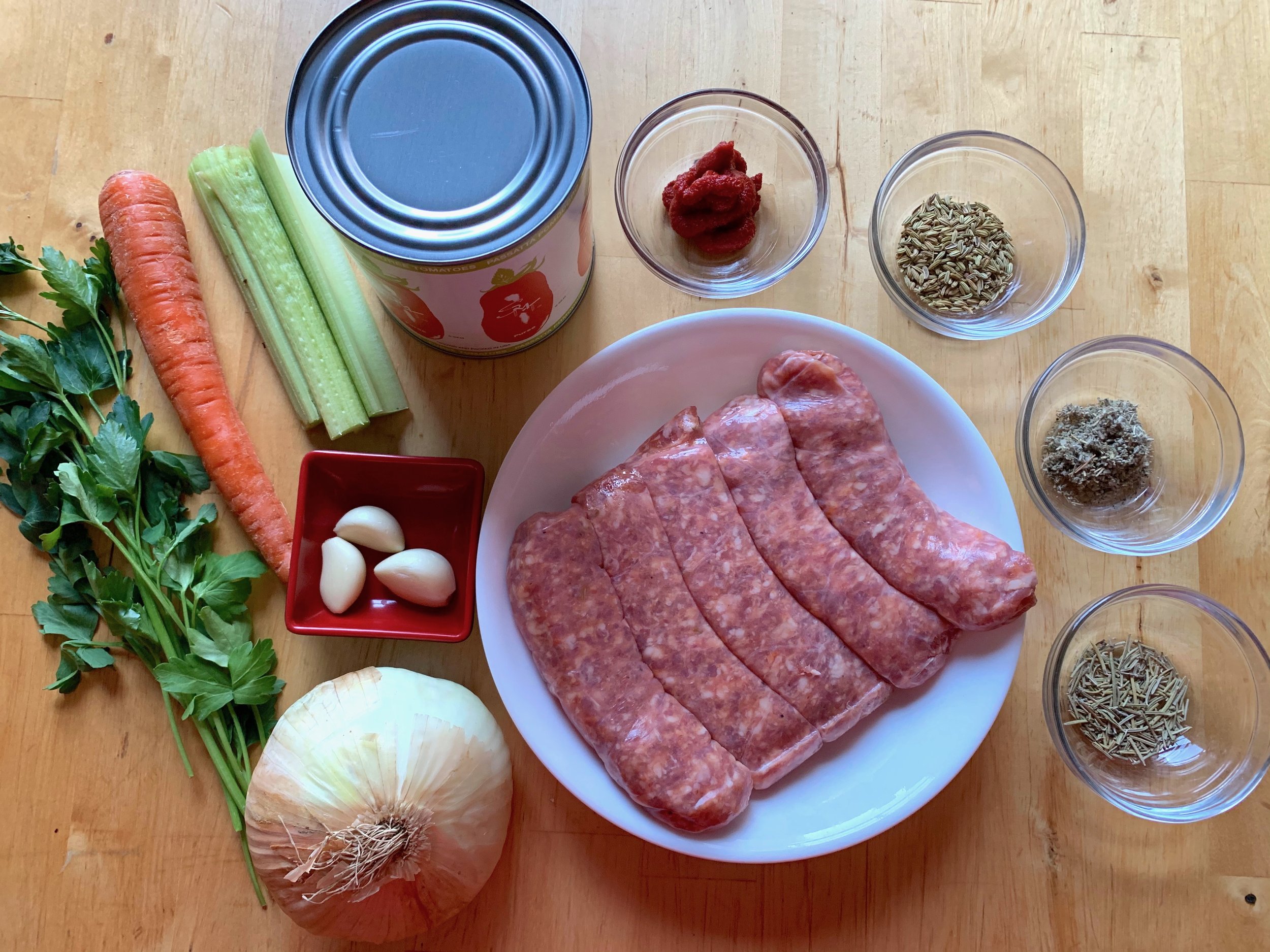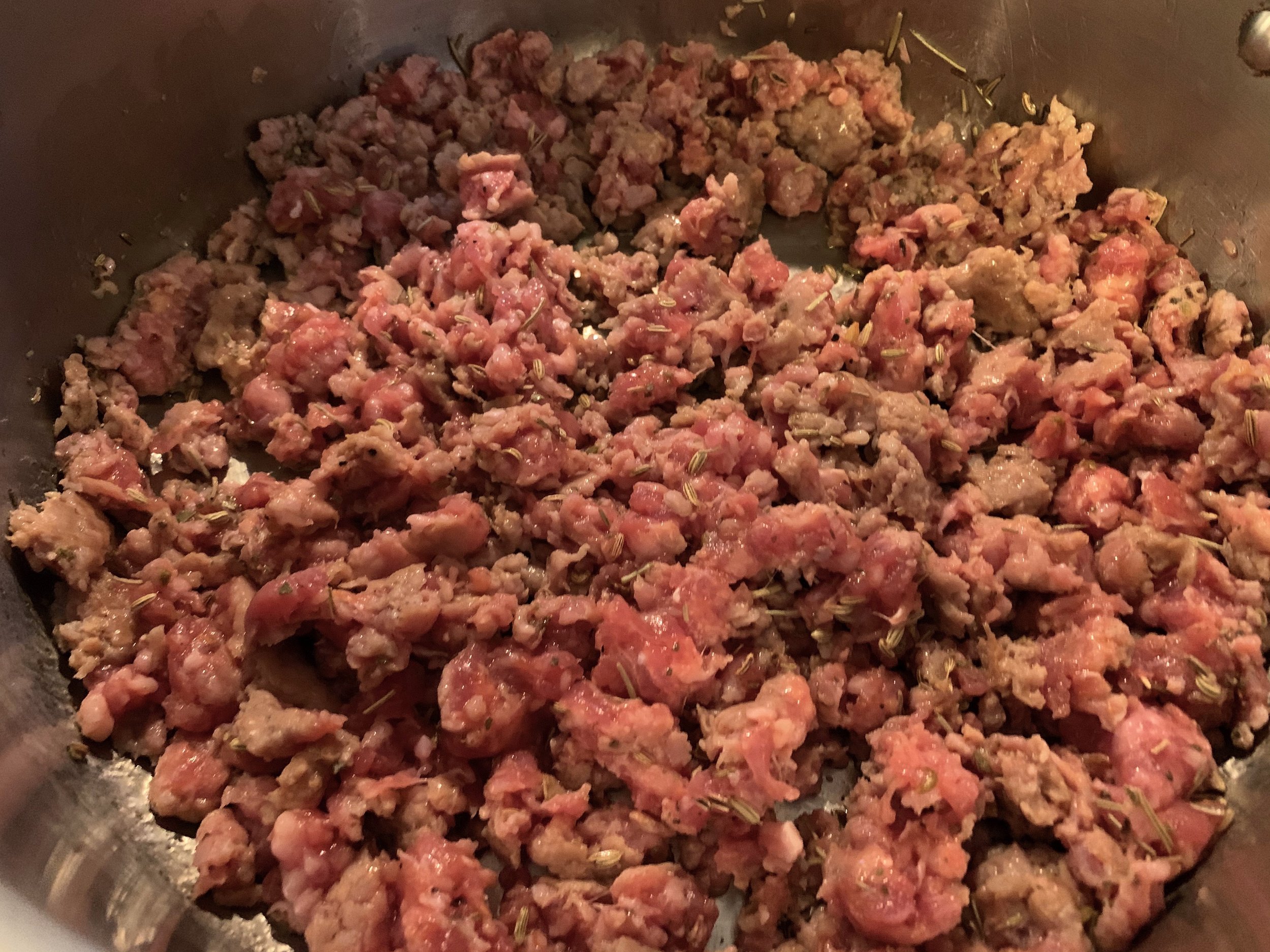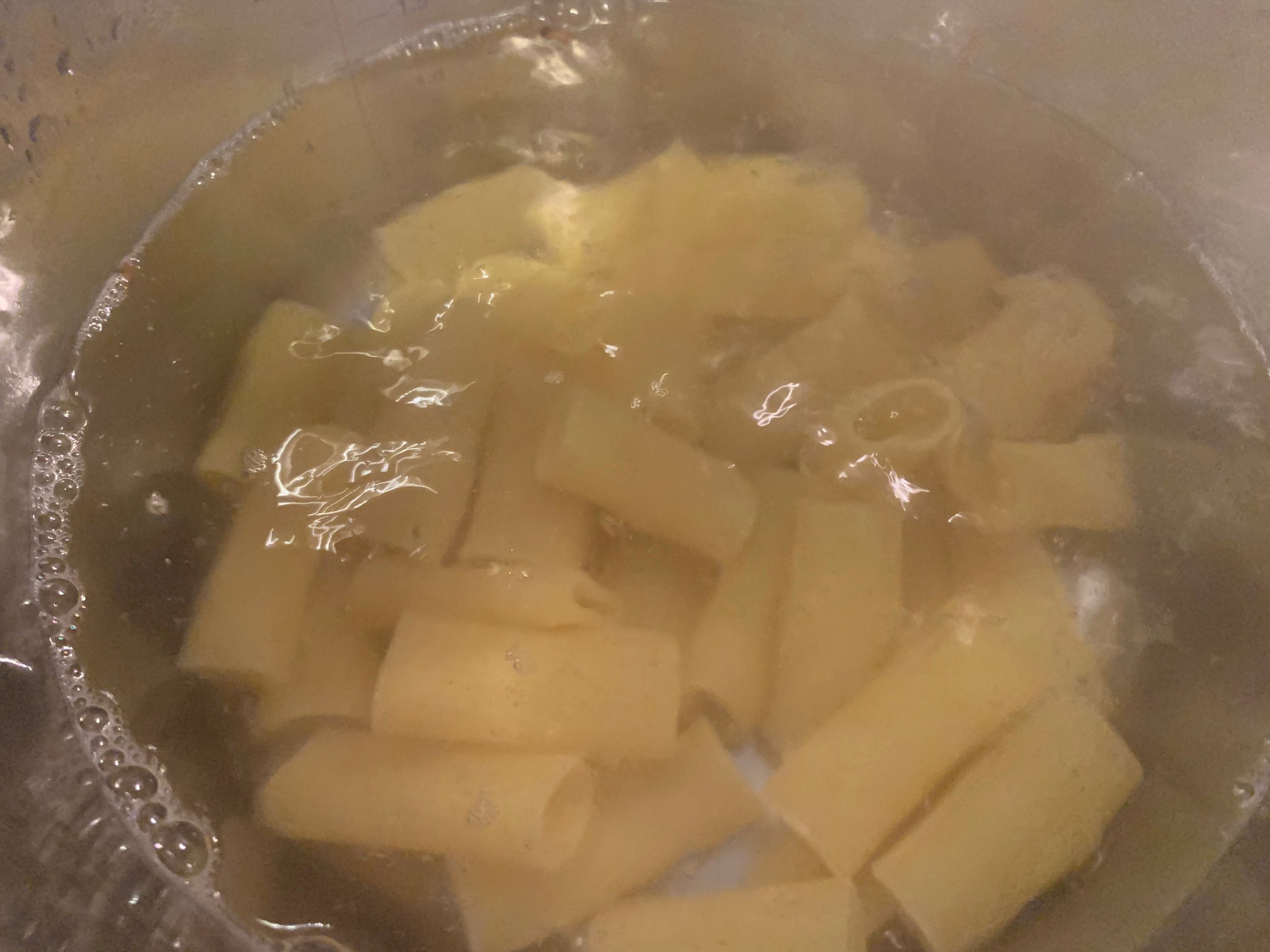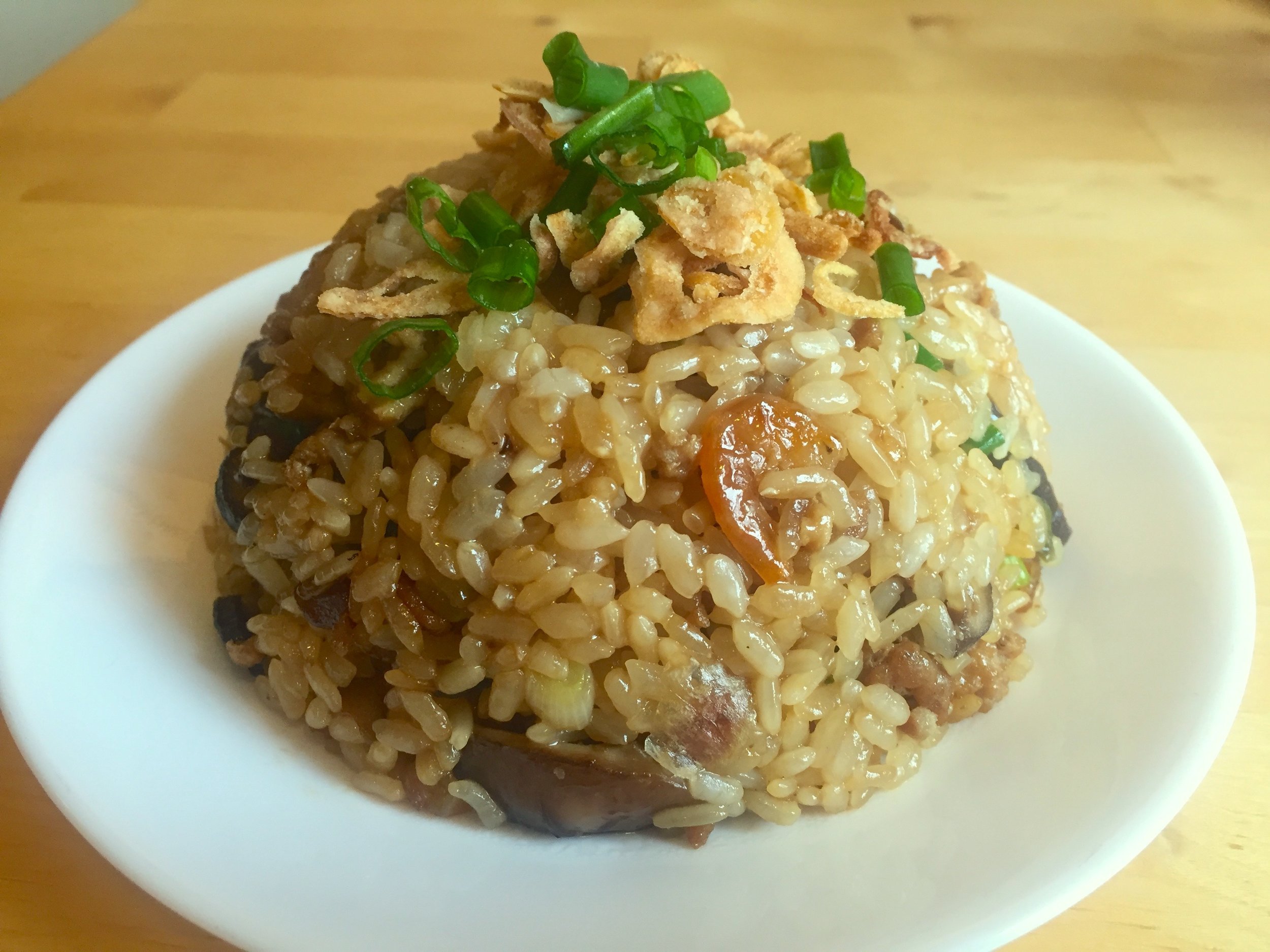Tuscan Sausage Ragu

The tomato-based ragù (meat sauce) is one of Italy’s best-known culinary exports [1]. There are countless regional varieties of ragù featuring different kinds and cuts of meat. This version from Tuscany is a hearty winter dish built on pork sausages and plenty of dried herbs.
Ingredients
1 lb sweet Italian sausage, de-cased
1 onion, diced
1 carrot, diced
2 stalks celery, diced
3 cloves garlic, minced
1 tbsp fennel seeds
1 tbsp dried sage, chopped
1 tbsp dried rosemary, chopped
2 tbsp tomato paste
1 can (14 oz) stewed tomatoes, crushed
¼ cup parsley, chopped
Olive oil
Salt to taste
Black pepper to taste
Parmesan cheese
12 oz pasta
Begin by adding about 1 tablespoon olive oil to a cold pot, [2] and crumble in the de-cased Italian sausage. Use a spatula or potato masher to break up the sausage. To adhere to the pasta with surface tension alone, the cooked sausage pieces must be small (less than 1/8 in), so be persistent when breaking the sausage up into small pieces! Add the fennel seeds, dried sage, and dried rosemary to the pot so they can flavor the oil and rendered fat. Cook the sausage and herbs for about 5 minutes, stirring occasionally, or until the sausage has browned.
While the sausage cooks, mince the garlic and finely dice the carrot, onion, and celery (into 1/8 in pieces). When the sausage is browned, add the diced vegetables and garlic to the pot. Cook the vegetables for about 15 minutes over medium heat, stirring occasionally, until they have softened.
Add the tomato paste to the pot and cook for a minute or two, until the paste is fragrant. Frying the tomato paste before introducing the wet ingredients helps us to extract its fat-soluble flavors [3]. Then pour in the crushed tomatoes, along with half of the fresh parsley. Bring the pot to a simmer and cook, stirring occasionally, for 30 minutes. In this time, expect the ragù to reduce and thicken.
While the sauce is simmering, we can cook the pasta. For meat sauces like this one, the best shapes are short pastas such as rigatoni or fusilli, or wide noodles such as pappardelle. Bring a pot of salted water to a boil. Dried pasta generally takes about 10 minutes of cooking time to reach al dente, so the pasta should hit the water when you have about 10 minutes of simmering left to do on the ragù. Once the pasta is done, drain it and set it aside.
Season the ragù with salt and black pepper to taste. To serve, toss the ragù with a serving of pasta and top with freshly grated Parmesan cheese and chopped parsley. Leftover ragù freezes well in freezer-safe containers or bags!
Substitutions
If you want to add a bit of heat to the ragù, use a spicy Italian sausage, or add some red pepper flakes along with the fennel seeds. Fresh herbs can be substituted for the dried herbs if you have them available. For a richer ragù, stir in half a cup of Parmesan cheese to the sauce when cooking. For improved depth of flavor and a hit of umami, I sometimes like to add a couple of anchovies with the tomato paste. They will dissolve into the sauce and make it taste more savory without turning it fishy.
[1] The Italian word ragù is derived from the French ragout—a slow-cooked meat stew. A ragù is not required to have tomatoes—many types of ragù have in fact little or no tomato product in them.
[2] Starting fatty meats in a cold pot or pan gives time for the fat to render out before the proteins in the meat tighten up. If the sausage you are using is particularly lean, you may have to add a bit more oil to the pot.
[3] The traditional method of making tomato paste first requires reducing tomato sauce to a thick consistency, then spreading it out on boards to dry in the sun. Most modern tomato pastes are dried in ovens, and use varieties of tomatoes bred specifically for making tomato paste, such as the Opalka or Amish Paste, which tend to have a lower water content than eating tomatoes like a Roma or Beefsteak.
Recipe
Prep Time: 10 min Cook Time: 50 min Total Time: 1 hr
Difficulty: 2/5
Heat Sources: 2 burners
Equipment: 2 pots or dutch oven
Servings: 6
Ingredients
1 lb sweet Italian sausage, de-cased
1 onion, diced
1 carrot, diced
2 stalks celery, diced
3 cloves garlic, minced
1 tbsp fennel seeds
1 tbsp dried sage, chopped
1 tbsp dried rosemary, chopped
2 tbsp tomato paste
1 can (14 oz) stewed tomatoes, crushed
¼ cup parsley, chopped
Olive oil
Salt to taste
Black pepper to taste
Parmesan cheese
12 oz pasta
Instructions
1. Add about 1 tbsp olive oil in a cold pot over medium heat, and crumble in the Italian sausage. Break the sausage into small pieces with a spatula or potato masher. Add the fennel seeds and dried herbs to the sausage and cook for about 5 minutes, stirring occasionally, or until the sausage has browned and rendered some of its fat.
2. Meanwhile, finely dice the carrot, onion, and celery, and mince the garlic.
3. When the sausage has browned, add the diced vegetables and garlic to the pot. Cook for about 15 minutes over medium heat, stirring occasionally, or until the vegetables have softened.
4. Add the tomato paste to the pot and stir until fragrant, 1-2 minutes.
5. Add the crushed tomatoes and half of the fresh parsley, stir well, and bring to a simmer. Cook, stirring occasionally, for 30 minutes.
6. While the sauce simmers, bring a pot of salted water to a boil. Cook your pasta of choice (rigatoni, fusilli, or pappardelle are good options) for about 10 minutes or until al dente. Drain the pasta and set aside.
7. Season the sauce with salt and black pepper to taste.
8. Toss the pasta with the desired amount of sauce and serve, topping with freshly grated parmesan cheese and the remaining parsley.




















